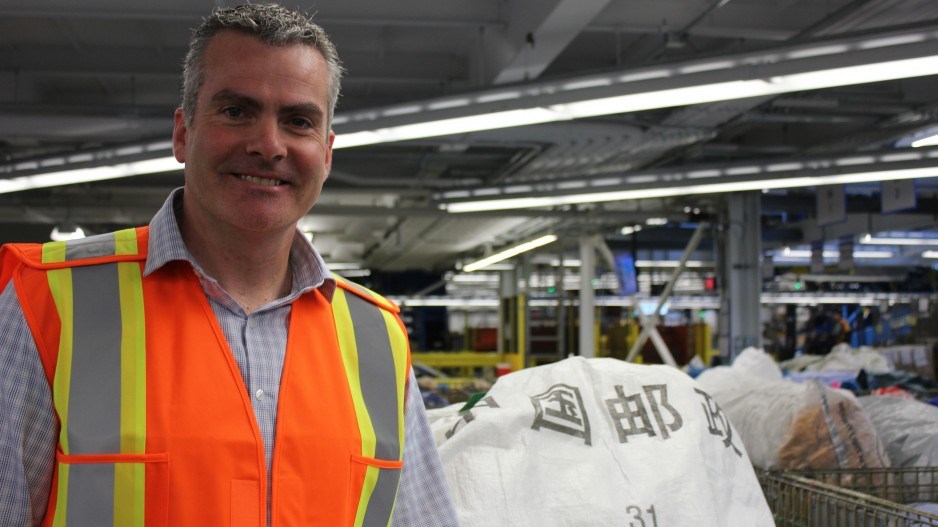Canada Post officially opened its 700,000 square-foot processing plant in Richmond on September 4.
The struggling company said the new facility will help it grow its parcel and e-commerce business. Canada Post is attempting to grow parcel delivery in response to sharply declining letter mail.
While Canada currently lags other countries in online shopping, e-commerce is growing in this country.
“As it relates to our parcel and package business, we’re currently seeing 17% growth in e-commerce,” Rob Hart, Canada Post’s general manager of domestic parcel delivery, told Business in Vancouver.
The new facility combines two plants that are now closed. One was located in Richmond, while the other was Canada Post’s well-known downtown Vancouver location on Georgia Street. Canada Post sold that building in 2013 to a pension fund investment firm.
The new plant employs between 250 and 300 workers. More people will work there during particularly busy times of the year, like Christmas and Black Friday.
The new facility is located on Sea Island, near the Vancouver International Airport. Since many deliveries arrive by air, the location will help Canada Post speed up deliveries and process more mail and parcels, Hart said.
The plant is more automated than previous facilities, and has been designed to handle more parcels than other sorting plants that were built in the era when letter delivery made up the bulk of Canada Post’s business.
Marc-David Seidel, a professor at the University of British Columbia’s Sauder School of Business, said that Canada Post will have to contend with other competitors in e-commerce, which include other deliverers like FedEx as well as Amazon and Google.
But the Crown corporation does have a shot at making e-commerce delivery a significant part of its business, Seidel said, because it already has the infrastructure in place to deliver to every address in Canada. It’s possible that an e-commerce giant like Amazon could partner with Canada Post in the future to deliver in Canada, Seidel said.
In December 2013, Canada Post announced a controversial restructuring plan that included phasing out home delivery, raising stamp prices and focusing on parcel delivery. The company also plans to cut around 8,000 workers over the next five years, mostly through attrition.
The plan raised the ire of many Canadians, as well as the union that represents postal workers.
Canada Post has needlessly accelerated the decline of letter mail by raising stamp prices, said John Bail, Pacific director of the Canadian Union of Postal Workers.
The union supports more parcel delivery, Bail said, but the transition to the new facility, which started limited operations in February, has not been without problems.
While no employees were laid off, more workers have been required to work the night shift at the new facility, the busiest time for delivery processing. He is also not convinced that more automation — which requires fewer workers — results in faster mail processing.
The union fears that as Canada Post grows its e-commerce delivery business, the corporation will hire outside of the union or contract out, Bail said.




